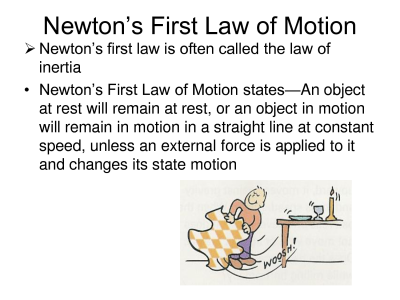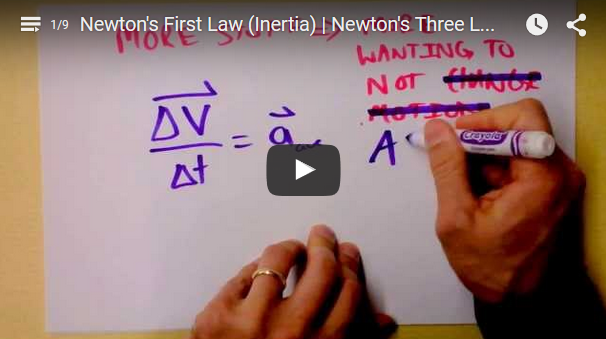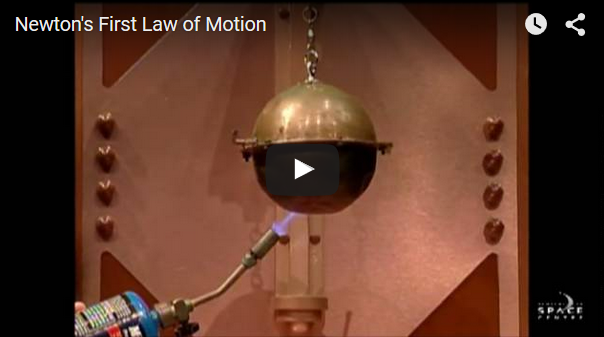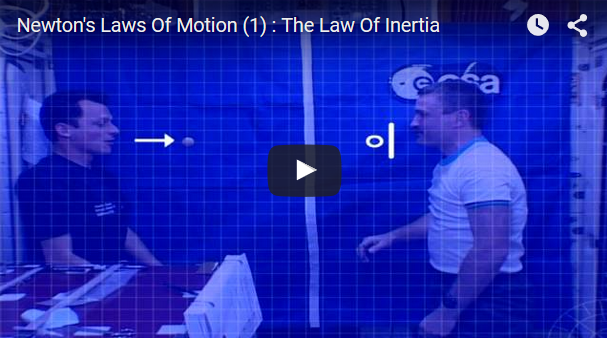Newton's first law introduces the force concept in relation to an object's speed and direction. If an object is in motion or at rest, the only way for the object's speed or direction to change is for an external force to act upon it. For example, a stationary ball in outer space will only begin to move when a force is applied to the ball. Since the ball begins to move we can say that its velocity has changed. Additionally, a ball in motion has no reason to change its velocity, speed or direction, unless an external force acts upon it.
Text/Videos
Here is a concise explanation of Newton's first law;
Here is the PhysClips section on Newton's First Law. Revisit these clips for the other two law. Note: This professor uses an underline notation for vectors;
Simulations
Try your hand at this sledding game after learning about Newton's 1st Law. Hint: It's a lot simpler than you would think!
This interactive simulation puts you in an elevator. Think carefully about what Newton's 1st Law means during the ride;
DEMANDS LOGIN NOW
Additional Studying/Review
- Watch Doc Schuster's inertia video for further explanations about Newton's 1st Law;
- This educational film from 1960 called Frames of Reference discusses/illustrates a very important part of Newton's Laws and will give you a very good "intuition" on inertial reference frames;
- This page on PhysClips discusses many aspects of Newton's Law and most importantly to you the limitations of the Laws.
- Here is an interactive page on EasyPhysics which summarizes Newton's Laws nicely as well as providing questions for you to answer.
- An Astronomer answers questions about Newton's 1st Law with the H.R MacMillan Space Center;
-
Newton's Laws Of Motion (1) : The Law Of Inertia




